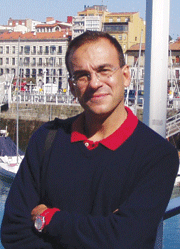E-Archive
Shot Peening in the Automotive Industry
in Vol. 10 - March Issue - Year 2009
Design or control the process? Both is better!

Mario Guagliano
Non destructive methods and techniques are widely used in many industrial fields to assess if a process has been correctly performed and if it introduced defects that cannot be tolerated in the final product. There are, generally, two ways to proceed in ND controls: to perform them on all the pieces produced or to perform them on a statistical basis, examining a limited but meaningful number of parts. On the basis of the chosen strategy and of the defects that we are looking for, it is possible to select the most opportune method to apply: the most frequent options maybe are XR images, ultrasonic tests, eddy currents, and so on.
If we focus our attention on shot peening and its application in the automotive industry, and we are looking for the correct experimental technique to apply to verify the correct execution of shot peening, we have to consider different aspects: the first ones are related to what we want to measure and to verify (residual stresses and surface hardening), the second ones refers to the type of control (statistical of not). It’s easy, not different from many other processes.
….But, unfortunately, different problems arise in considering all these aspects just mentioned. The first one is that shot peening is executed referring to the Almen Intensity, that is a scale that is not directly related to the residual stress induced by the treatment and to the hardening caused by shot peening. The second is that, due to the large production of automotive parts (also in this period of deep crisis!), we have to think about techniques fast and ready, no matter if the control is statistical or not.
About the first issue, it is necessary that, during the design stage, the desired residual stress field is correctly evaluated by the engineers and that it is correctly put into relation with the process parameters (shot size and material, coverage and Almen Intensity) and, at the same time, that the relations between the residual stress and the desired (fatigue/contact fatigue/fretting) performances are clear. The second problem reduces the choice to very few methods: it is not possible to think about the hole drilling technique for measuring the residual stress field, since it takes time and is semi-destructive, even if only the surface value is of interest. But also XR diffraction has many disadvantages if applied as ND on-line control technique, even if by this method of measures we obtain both a measure of the residual stresses and also an indication of the surface hardening induced by the value of the full width at half maximum (FWHM). In fact, it is long and it requires material removal for in-depth measurements. The Barkhausen noise technique seems to be the most suited for this kind of application: it is non destructive even for in-depth measurements, it is fast and can be applied on production lines. However, it is not supported by a strong theoretical basis and the signal we get is related not only to the residual stress field but also to other factors and it can be hard to distinguish the different contributions.
So what can we do? Well, the main need is that the chosen technique can be correctly applied to the parts of interest. But, apart this requirement, to evaluate if the process is correct it is important to know what we are looking for. As regards this last aspect, it is fundamental that we know the operational conditions of the part and that we know a criterion to relate the value of the controlled quantities with the expected strength of the part. For example, we should have criteria able to relate the residual stress induced with the fatigue resistance and life of the part we are treating.
Sometime it is easy, sometime it is not so and research, numerical and experimental investigations should be carried out to learn the case we are dealing with: this means that we have to design correctly the process, thinking about the application of the peened part.
Only if we have a deep knowledge both of shot peening and of the operational conditions we can estimate the benefit obtained by applying shot peening we can get the maximum advantage. In this case it is also important to develop a strict ND control system and to dedicate resource to its correct choice.
Shot Peening in the Automotive Industry
by Mario Guagliano
Contributing Editor MFN and
Associate Professor of Technical University of Milan
20156 Milan, Italy
mario@mfn.li
Author: Mario Guagliano



























